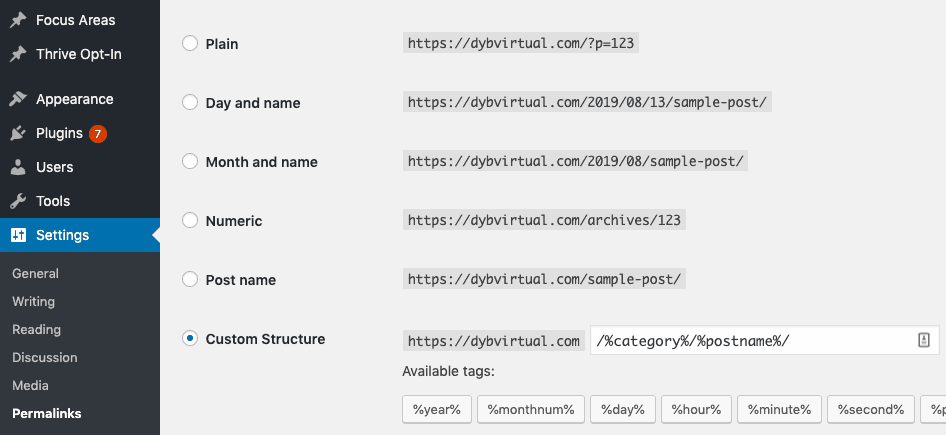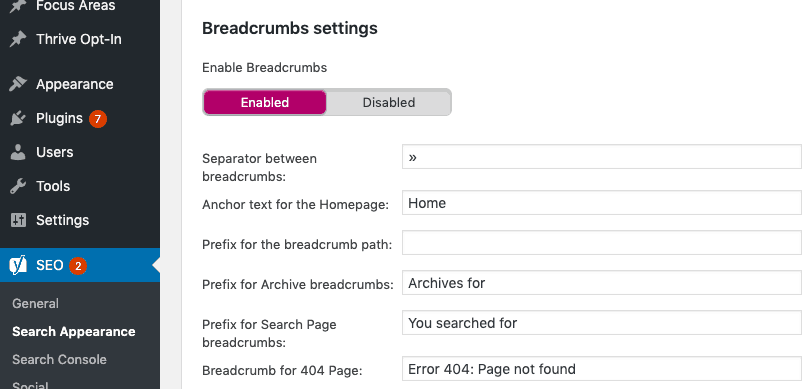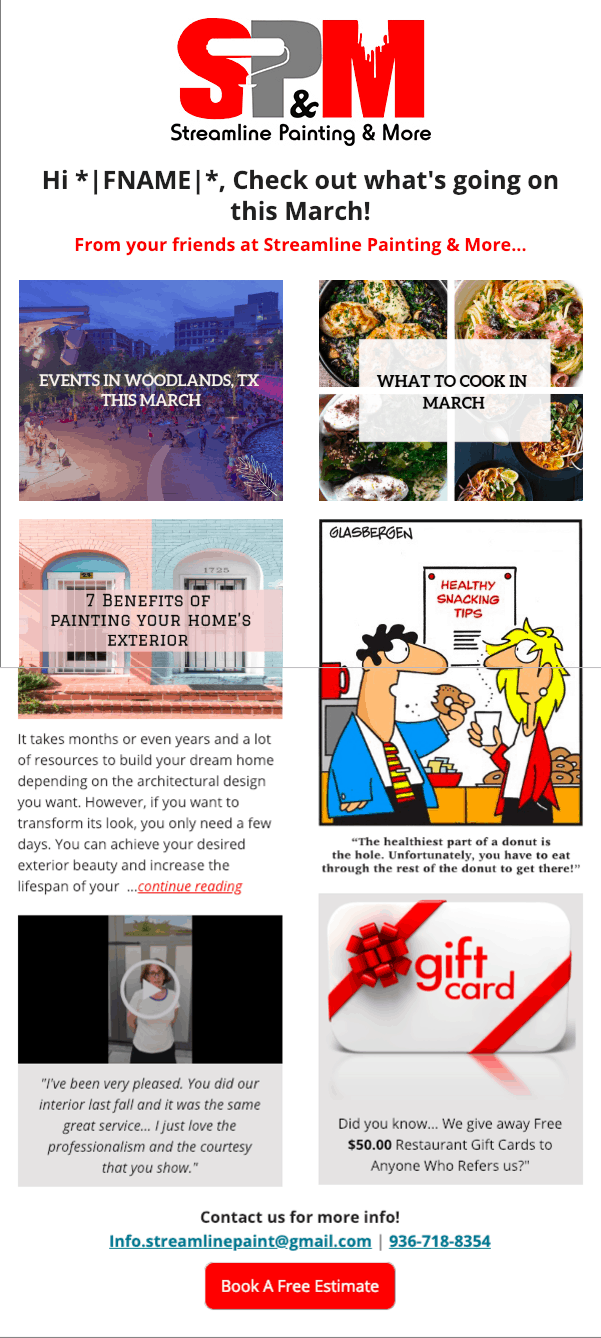
17 Ways to Generate Leads Using Your Painting Blog
I want to stress to you that a blog is one of the most powerful lead generating weapons that any painting business can utilize.
Blogging will not only boost your website’s ranking and generate numerous leads, but it will also start meaningful conversations and build rapport!
In this article, we share in great detail 17 ways to generate leads using your painting blog:
1. Optimize Your Painting Blog
Unless your painting business has been around forever and is based solely on word of mouth referrals, you’re not going to aggregate a significant amount of leads unless people actually find your blog in the first place.
For Google and other search engines to find and rank your blog, you need to do a few basic optimization practices which only take a few clicks.
- You will need to create a site map –this enables search engines to easily “crawl” your blog and rank your blog posts.
There are plenty of plugins that can help you do this, but if you don’t already have the Yoast SEO plugin, in all seriousness, please stop what you’re doing and download it now!
- You also need to set up a “permalink structure”.
On brand new websites, your URL’s consist of random letters, numbers, and symbols.
By setting a “custom” permalink structure, it will use your title, category, etc, in the URL which improves SEO big time!
You can set your custom permalink by going to your WordPress Dashboard > Settings > Permalinks > Custom Structure
- You also need to turn on “breadcrumbs”.
Breadcrumbs not only help your user know where they’re at on your site but more importantly, it helps Google work out your website’s structure in order to rank your site.
To turn on bread-crumbs go to your WordPress Dashboard > Yoast SEO plugin > Search Appearance > Breadcrumbs > Enabled
- It’s also a good idea to link your social media accounts to your website on your “Contact Us” page and in your page footer.
You can use a plugin like Social Media Widget to display social media icons on your site.
2. Understand Your Audience
Before you even start writing posts for your blog, take some time to study your target market or potential customers.
Assuming it’s a relatively new blog, you might not have a lot of audience already.
Who is your “target” customer?
Are you targeting homeowners, business owners, commercial property managers, commercial contractors, or real estate agents?
Here is a free PDF from DYB Coach to help you narrow down and figure out your ideal customer:
If you have any painting specialty/niche such as cabinet repaints, exterior residential, commercial, lead remediation, or anything along those lines, your blog posts and painting services should reflect this immediately to let the user know!
3. Focus On Your Prospects’ “Pain Points”
Now that you’ve reflected upon who your potential customers are and what they need, it’s time to recognize and appreciate their pain points.
If you’re a commercial painter dealing with business managers, for instance, one of their biggest concerns could be fear of interruption of their bossiness operations during painting sessions.
So a blog titled ‘How to Prepare Your Business for Professional Painting to Minimize Interruptions” would be spot-on!
Then at the end, quickly mention what you usually do as a commercial painting contractor to keep the interruptions to a minimum.
This warms them up to trusting you and increases their chances of booking you for an estimate.
Download our 101 blog post ideas for painting contractors here.
4. Write Compelling Blog posts
Blog posts are pretty much the lifeline of any website, and how you create and present them greatly impacts your visitor’s decision on whether to stick around or move onto a different painting blog.
As you come up with your content strategy, focus on the questions your potential customers are asking you every day.
I strongly recommend reading, “They Ask You Answer” by Marcus Sheridan.
In this book, Marcus reveals how to become the most trusted in your industry, simply by paying attention to customers questions and then thoroughly answering them in blog posts.
By answering your customer’s questions, you’re also answering the questions that search engines are looking for.
Based on your painting niche or location, you could create content that answers questions like…
“Should I Paint or Stain My Deck?”
“Is it More Cost-Effective to Replace or Repaint My Worn Down Cabinets”
“How Much Does Interior Painting Cost in Boston, MA?”
“What to Look for When Choosing a Painting Contractor”
Simply answer the questions you are asked every single day, in a blog post.
Most importantly, do NOT be afraid of answering questions you think will lead your reader away from your site.
By answering questions that no other painting business wants to answer you are gaining TRUST.
5. Deliver Product Education
You could be offering lead remediation, drywall repair, or deck refinishing services, but your potential customers have no idea what to expect.
Create blog posts or service description pages to educate your customers on the processes involved in the services that you offer step by step.
Thankfully, a blog allows you to build context around your service to put things in perspective so that your customer can quickly figure out whether or not you are right for them.
6. Offer Guides or Personalized Reports
Offering comprehensive, truly valuable guides or reports is a common method that many painters use to generate leads.
Let your users download the report or guide after filling out a form, and collect their name and email.
The freebie could be something like:
“Before Hiring a Painting Contractor, Make Sure They Can Answer ‘YES’ to These 25 Questions”
Anything that offers value to them, so that you can receive their email.
7. Make Content Easy To Consume
Many of your prospects will be reading your content on the go, and you want to make it easy for them to extract the main points as quickly as possible.
If you hit them with a large wall of text, they will probably not stick around long enough to get to your call to action (CTA) at the bottom of the article.
Make your content easy to scan and easily convert prospects into leads with the use of:
- short paragraphs
- bolding
- subheadings
- bullet points
- numbered lists
- etc…
8. Optimize Your Blog Posts for Search Engines
If it seems like no one is reading your blog posts chances are they may not be well optimized for search engines.
Search Engine Optimization in regards to blog posts is essentially the process of optimizing your post so that they can be easily located, crawled, and ranked in search engine result pages.
The main things to optimize here include:
- Loading your blog posts with the right keywords/keyphrases
Ex: my keyphrase for this blog post is “painting blog“. Yours may look something like, “Cabinet repaints, Exterior residential, commercial contracting, etc..” Try to fill your blog posts with keywords your audience is looking for, without overdoing it.
- When inserting images using the “Add Media” button, or uploading a featured image, always have your keyword(s) in the image title and in the “alt tags” (alternative text) see my example for this blog post below:
- At the very bottom of your written blog post if you’ve installed “Yoast SEO” you’ll see the widget. Make sure to optimize the “Meta Description” to be attractive enough for the reader to click on, yet realistic (no false promises). See my example below:
- Also, be sure to add relevant tags to your blog posts, this can be done on the right side of your blog post in the WordPress Editor:
9. Use Attention-Grabbing Titles
So you’ve worked super hard for your post to make it to the first page of Google; but, it doesn’t stop there…
The title you use must be attractive enough for the reader to want to click through and read more about your post.
Make the title engaging yet short and sweet, while including keyword(s) and setting the right expectation.
It is important to remember not to be deceptive or sneaky about it.
If they can trust you on this, they will be more likely to warm up to your invitation for a free estimate.
For the best SEO advantage, use your keyword/keyphrase as early in the title as possible.
10. Include Visually Appealing Graphics
Describe topics around your painting service with images and videos that attract interested homeowners, project managers, or commercial contractors.
As visual beings, your visitors want to interact with your painting services through vivid images and descriptive videos of your work.
The most popular and effective way of doing this is by including ‘before’ and ‘after’ photos of some of your recent projects in your blog posts.
11. Build An Email List
An email list is probably the heart of lead generation for painting businesses looking for cost-effective ways to market their painting services.
The basic concept here, is to utilize email to keep customers/prospects informed about changes in the business so that you can stay connected, also sending them helpful info pertaining to painting services, while sharing your blog posts as you write them.
Here’s our example of monthly newsletters we create for many painting contractors.
12. Add Social Sharing Buttons
Social media and blogs complement each other as far as lead generation is concerned.
Consider adding Facebook, Twitter, LinkedIn, Tumblr and Pinterest share buttons on your blogs.
The goal is to expand your reach by enabling readers to share articles with someone they know.
We recommend using the Social Snap plugin on WordPress.
It provides the reader with a quick and easy option to share your blog post to their social media platforms:
Additionally, as earlier mentioned, be sure to connect your company social media pages to your blog.
This helps to add ‘social proof’ to your brand, which is important because most prospects are more likely to book an estimate with you if they see positive social media comments, ratings, reviews and conversations around your brand from your previous customers.
13. Don’t Forget the Call To Action (CTA)
Your readers may have learned all about your process, the how-to’s, or other educational material about your products, and they may be very interested…
However, you do need to provide quick access for them to be able to seal the deal by booking an estimate.
This typically happens at the end of blog posts and or on sidebar menus.
If you have an option for them to book an estimate directly from your blog (see next point), ask them to book an estimate and direct them to that page.
You could also say something like “Call us today [phone number] to book your FREE estimate!”
14. Automate Your Estimate Bookings
Many times, the ultimate goal of marketing your service indirectly through blog content is to have customers book your painting services.
You need to make booking an estimate as seamless and painless as possible without too much hassle on either side.
Thankfully, here at DYB virtual, we know a number of automation techniques which can enable you to do just that, check out our free Zapier Flowchart for Painting Contractors:
15. Blog **Consistently**
Google and other search engines love fresh content, and many times they tend to favor a blog that is regularly updated with new posts.
Waiting for too long before updating your blog will cause some of your high-ranking posts to drop in ranking, and this makes it difficult for your prospects to find you.
Additionally, a regular posting schedule prepares your prospects on when to expect your post.
Research and experience from many experts show that blogging 2-3 times a week captures most of the benefit in terms of customer acquisition.
If you don’t have the time to write your own blog posts, you should consider engaging a virtual assistant that specializes in painting contracting… luckily we have you covered!
16. Engage Through Comments
Encourage your prospects to respond with comments on your blog’s comment section and respond to them promptly and thoughtfully.
This might not be as direct as other methods of interaction, but it helps to get the questions in your readers’ minds out and answered.
It also increases interaction on your blog, which sends positive signals to search engines.
17. Promote Your Blog On Other Social Media Platforms
Expand your blog’s reach by sharing your posts on business social media pages as well as your personal pages where appropriate.
Also, be sure to include a link to your blog in your emails and estimates.
It might not seem like much, but this helps to introduce more prospects to your content who might be interested but do not know the blog exists.
The Bottom Line:
A painting business blog serves as a hub for customer engagement, from providing supporting information to closing the sale.
Use the above tips to maximize your painting blog‘s ability to bring in new leads.
Download our 101 blog post ideas for painting contractors here.
If you have any questions please feel free to email me anytime: Nadia@DYBVirtual.com and let’s connect on Facebook!












